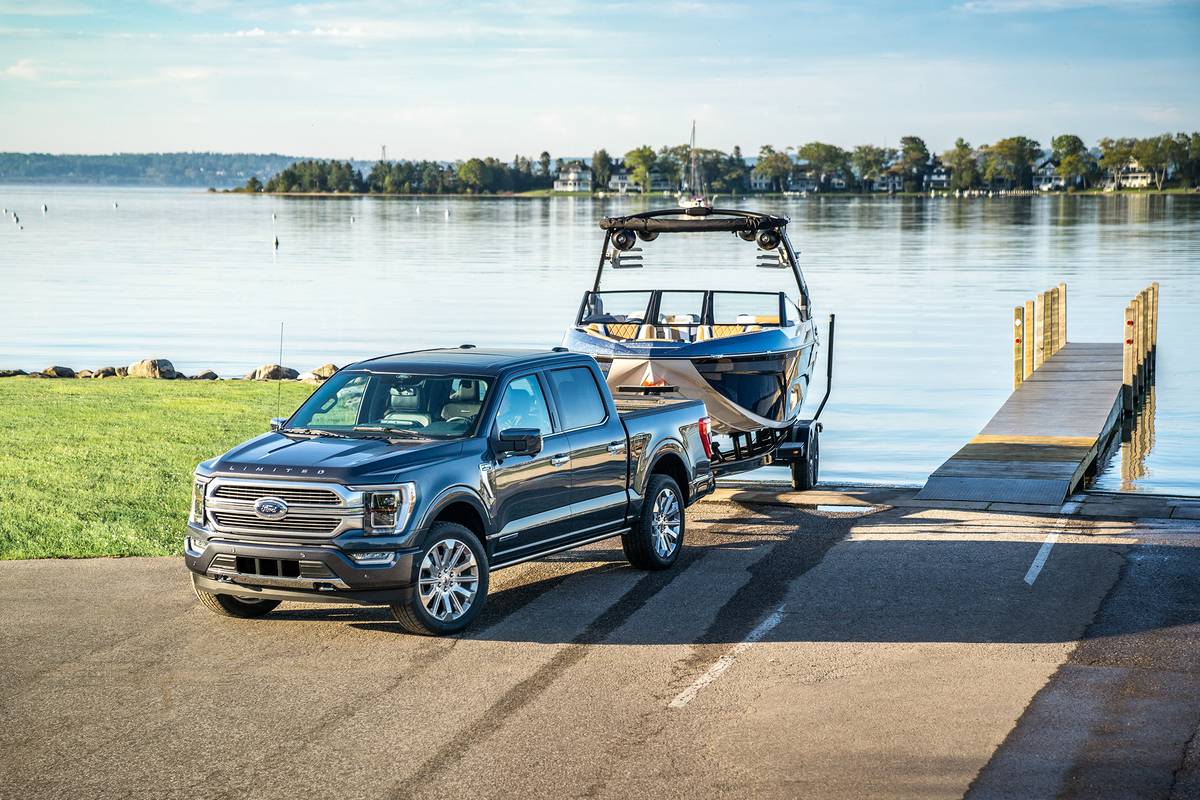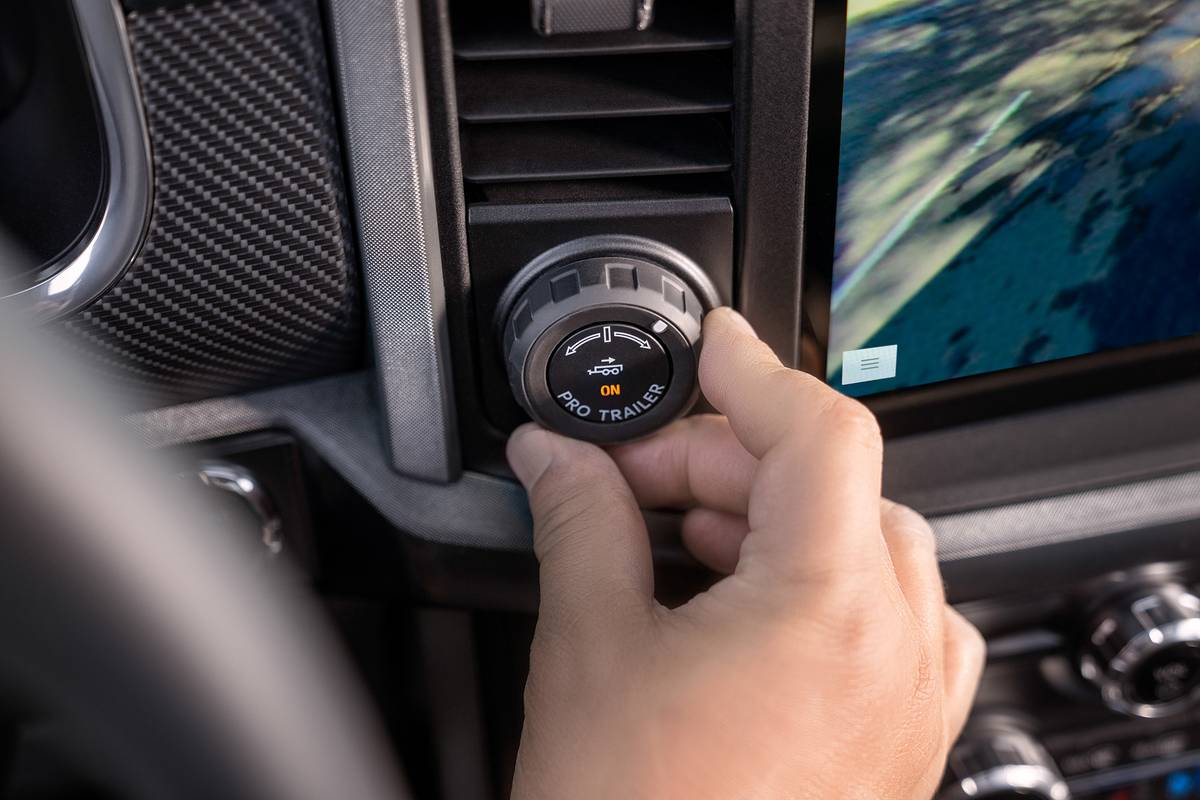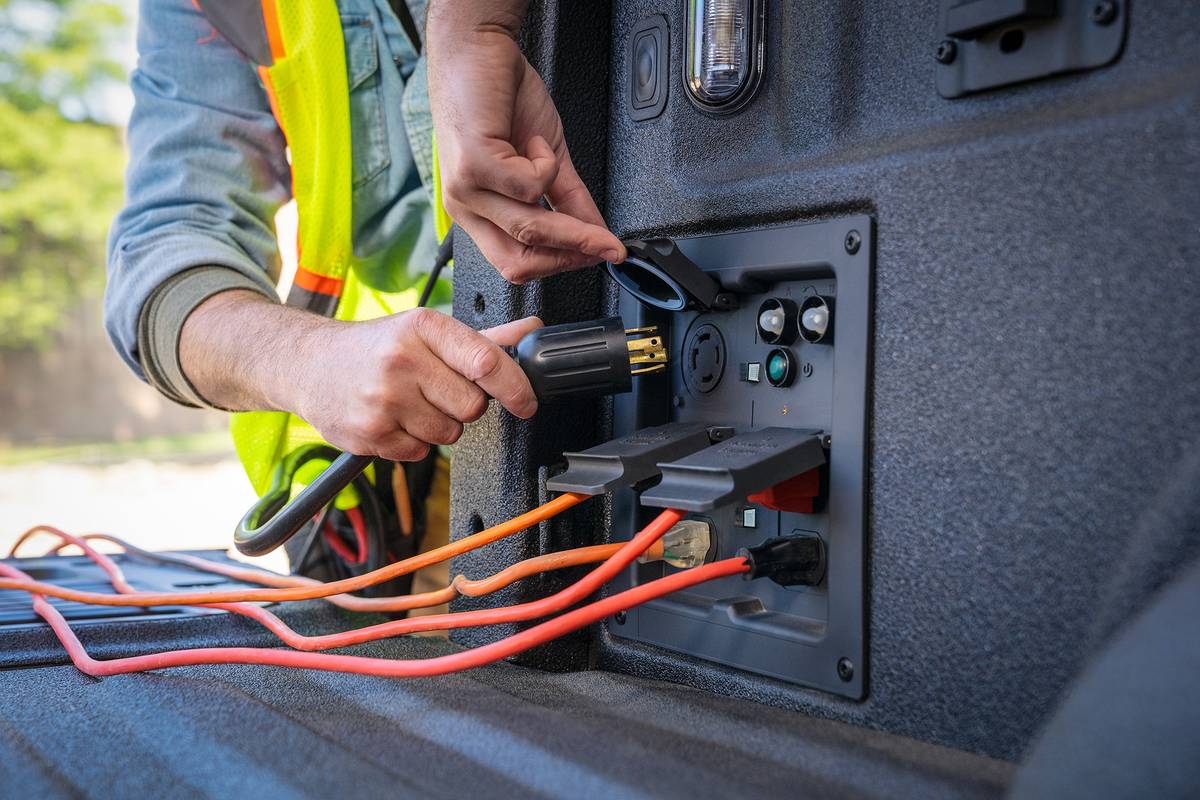Does the 2021 Ford F-150 Hybrid’s Towing Prowess Make the Diesel Obsolete?


A new Ford F-150 is always cause for celebration, as the venerable pickup truck remains one of our favorites — so with much anticipation, we got behind the wheel of several examples of the 2021 version of Ford’s bestselling model at a socially distanced event at the company’s Michigan Proving Grounds near Romeo, Mich., to see the updates to the light-duty pickup’s lineup. The most obvious change is the new styling and the new interior, both of which you can read about by clicking on the link below to our first drive review of the 2021 Ford F-150.
But updates to the new truck go beyond cosmetic changes. Ford has introduced a bunch of new technology for the new model year, including some powertrain news that got us wondering about the future of Ford’s light-duty 3.0-liter Power Stroke diesel engine.
Related: 2021 Ford F-150 Review: Keeping the Champion in Top Condition
While most of the F-150’s powertrains carry over unchanged from the prior generation, there’s one new arrival that’s sure to grab a lot of attention: the new hybrid PowerBoost powertrain, an electrified version of the F-150 that combines the twin-turbocharged gasoline 3.5-liter EcoBoost V-6 with an electric motor integrated into the standard 10-speed automatic transmission.
Why should you care? Well, the hybrid system produces 430 horsepower and 570 pounds-feet of torque, while still being good for a 24/24/24 mpg city/highway/combined EPA rating. That makes it a real rival for the diesel 3.0-liter Power Stroke V-6 engine option in the F-150 in terms of efficiency; the 2020 F-150 diesel gets 21/28/24 mpg in its most efficient configuration (figures for 2021 are not yet out). The hybrid powertrain also significantly outpaces the diesel in terms of power, the latter generating just 250 hp and 440 pounds-feet of torque.
My short 37-mile street-drive loop of a PowerBoost-equipped truck did indeed return a 24-mpg reading from the trip computer, surprisingly — and even more surprising was the truck’s desire to keep itself in electric mode as much as possible. It makes trundling along main streets at lower speeds a quiet and serene voyage, but a quick stab of the go-pedal also produced stunning acceleration. Keep in mind that the hybrid actually has more power even than the 5.0-liter V-8, which is rated at 400 hp and 410 pounds-feet of torque.
Towing Capabilities

But I was also interested in the abilities of this new hybrid powertrain to do truck-type things for truck-type people, and that means towing. Ford was prepared for this and had a variety of F-150s attached to some sizable trailers to give us a taste of what the truck can do. Our exposure to its abilities was limited by the fact that we were on closed-to-the-public proving grounds, but the loop we drove included a respectable uphill climb of at least a 5-7% grade at speeds over 45-55 mph, often from a standing stop. The PowerBoost F-150 I drove towed a 7,000-pound camper trailer, which is well under the 12,700 pound maximum towing capacity limit that Ford has imposed for PowerBoost-equipped trucks. That’s the number for 4×2 trucks that come with a 3.55 rear axle ratio as part of the Max Trailer Towing Package; if you opt for a 4×4 truck, it gets a 3.73 gear and a 12,400-pound max tow rating. Forgo the towing package and you’re still at a respectable 11,000 pound rating.
What’s interesting about this is that this is a better max tow rating than you can get with the diesel 3.0-liter V-6. That truck is rated for 12,100 pounds in 4×4 form with its Max Trailer Tow Package (it’s also not available as a 4×2 truck). But you can get the diesel on either the SuperCab or SuperCrew versions of the F-150 — the PowerBoost hybrid is available only on SuperCrew models.
The PowerBoost hybrid does come up a little short of the regular 3.5-liter EcoBoost V-6-equipped version of the F-150 in terms of max tow ratings. The top tow rating on a standard 3.5-liter truck is 14,000 pounds when properly equipped with the Max Trailer Tow Package and two-wheel drive. Why the difference? Likely the vehicle’s weight — the PowerBoost system adds anywhere from 476 to 569 pounds to the weight of a standard 3.5-liter EcoBoost truck and 248 to 274 pounds to the weight of a diesel-powered F-150. That extra weight comes in the form of a 1.5-kilowatt-hour lithium-ion battery pack, a 47-hp electric motor and all the various ancillary cables, coolers and controllers that come along to support the electrified system.
Luggin’ and Tuggin’
So how does it perform? It’s outstanding. The power available from the hybrid system is boundless, easily accelerating the truck up to speed and always providing a reserve of power for noticeable acceleration on steep grades from either a standing start or a rolling boil. Downhill slopes are also easily handled, with engine braking and downshifts almost second nature to the F-150’s Tow/Haul mode, which takes charge of shifting the 10-speed automatic in ways more efficient and skillful than I could likely manage manually. It feels much more responsive than the last time I towed with the diesel 3.0-liter variant, and having that extra load of torque on hand makes a noticeable difference in all conditions. Is it better than the standard 3.5-liter EcoBoost V-6? I never had a problem with the basic 3.5-liter’s towing prowess; it too always had plenty of grunt for tugging a load up hills, and the F-150’s basic structure and outstanding rigidity have always proved to be an excellent combination for towing duty.
The issue I’ve had with Ford’s EcoBoost V-6 in the past (in several applications across many different vehicles) is that it gets seriously thirsty when you start putting it under load, for while it does produce plenty of usable power for towing and hauling, it works like crazy to do so, sucking down petrol like a thirsty party animal. My big question for the hybrid, and one that wasn’t answerable with the brief drive I was allowed, is how the electrified system works toward improving fuel efficiency when towing — if it does at all. It’s clearly an efficiency winner when there’s no load or people to carry around, but how efficient it is when towing or carrying a load in the bed will be the big test to see if it’s worth the price.
The Price Isn’t Bad Either

On the cheapest F-150, an XL SuperCrew 4×2, the PowerBoost hybrid powertrain is a $4,495 option above the standard 3.3-liter V-6, but Ford also automatically adds the $975 Trailer Tow Package to make it a $5,470 option. Adding the diesel 3.0-liter Power Stroke V-6 instead would be a $4,995 option, but Ford also requires you to specify a four-wheel-drive truck — making choosing the diesel a much pricier $8,325 option. And that does not include the $975 Trailer Tow Package, so adding that to make comparable equipment comparisons makes the diesel a $9,300 option.
It’s quickly starting to look like the PowerBoost hybrid is the new top choice for towing duty, making the diesel less appealing at every turn. Its combination of copious power, ease of use and genuinely innovative ancillary systems (check out the Pro Power Onboard generator system that comes with the hybrid) make it an intriguing choice for towing duty. We plan to take a longer spin in one in 2021 and put it through some proper paces to know for sure.
Related Video:
Cars.com’s Editorial department is your source for automotive news and reviews. In line with Cars.com’s long-standing ethics policy, editors and reviewers don’t accept gifts or free trips from automakers. The Editorial department is independent of Cars.com’s advertising, sales and sponsored content departments.

Detroit Bureau Chief Aaron Bragman has had over 25 years of experience in the auto industry as a journalist, analyst, purchasing agent and program manager. Bragman grew up around his father’s classic Triumph sports cars (which were all sold and gone when he turned 16, much to his frustration) and comes from a Detroit family where cars put food on tables as much as smiles on faces. Today, he’s a member of the Automotive Press Association and the Midwest Automotive Media Association. His pronouns are he/him, but his adjectives are fat/sassy.
Featured stories



